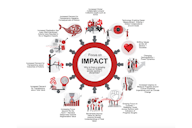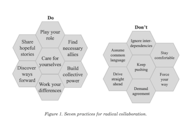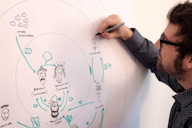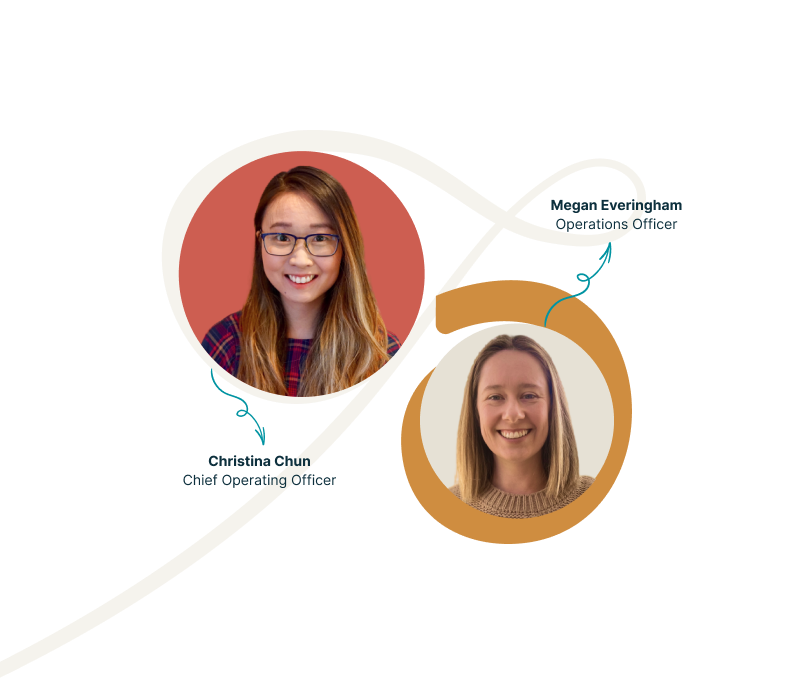
Resource library
This library offers a curated collection of valuable tools, guides, and resources that exist in the social enterprise sector. Explore guides, articles and many more to support your journey, whether you’re starting a social enterprise, tackling sector challenges, or navigating the impact economy.
Suggest a new educational resource or update here to help keep this library useful.
30 results found
.png?w=192)
'Aboriginal Economics', Gaala Watson (Sustainable Table)
ArticlesThis article examines Indigenous perspectives on economics and self-determination in Australia, highlighting historical dispossession, economic exclusion, and alternative frameworks for wealth. It explores Indigenous values of communal wealth, economic sovereignty tied to land and spirit, and sustainable solutions.
'Aboriginal Economics', Gaala Watson (Sustainable Table).png?w=192)
‘B Corps Bring Purpose and Profit for Sustainable Business’, Sustainability Mag
ArticlesCertified B Corporations (B Corps) are redefining business success by proving financial performance and social responsibility can coexist. A recent B Lab white paper highlights how B Corps outperformed traditional businesses during 2019–2021, demonstrating resilience, stronger revenue growth, and higher job retention. Their stakeholder governance model, which balances the interests of employees, communities, the environment, and shareholders, is key to their success. This article explores the impact and growing influence of B Corps in modern business.
‘B Corps Bring Purpose and Profit for Sustainable Business’, Sustainability Mag.png?w=192)
#BeyondtheRules — Balanced governance and ‘behaving well’ everywhere, every day.
ArticlesDark Matter Labs examines governance in social enterprises as an interconnected system, focusing on balancing power, autonomy, responsibility, accountability, and risk. It challenges traditional hierarchies, linking governance to broader social issues, and introduces the "Beyond the Rules" initiative.
#BeyondtheRules — Balanced governance and ‘behaving well’ everywhere, every day..png?w=192)
Branding Frameworks - the Brand Pyramid and Keller's Brand Equity Model, Mindtools
ArticlesThe Brand Pyramid and Keller's Brand Equity Model are complementary frameworks for understanding and building strong brands. The Brand Pyramid illustrates five stages customers go through in developing brand loyalty: Presence, Relevance, Performance, Advantage, and Bonding. Keller's model, depicted as a four-level pyramid, focuses on how companies can build brand equity: Brand Identity, Brand Meaning, Brand Response, and Brand Relationships. Both models emphasise the importance of understanding customer perceptions and emotions, and creating positive brand experiences.
Branding Frameworks - the Brand Pyramid and Keller's Brand Equity Model, Mindtools
Co-Creating a More Equitable World: The Transformative Benefits of Participatory Design, MIT D-Lab
ArticlesThis MIT D-Lab article introduces participatory design as a powerful approach to fostering equity and creating sustainable solutions by engaging end-users as co-creators. It explores the benefits of building skills, trust, and ownership while producing durable, context-specific outcomes. By tailoring methods to different challenges, participatory design promotes inclusivity and addresses systemic inequities.
Co-Creating a More Equitable World: The Transformative Benefits of Participatory Design, MIT D-Lab.png?w=192)
‘Expanding Concepts of Scale’, Gord Tulloch
Articles‘Can you scale your social enterprise?’ is a question often heard. This blog by Gord Tulloch challenges a narrow view of ‘scale’, which usually refers to volume and growth. Tulloch suggests there are five pathways to achieving ‘scale’ or impact, including increasing numbers, changing the rules, changing beliefs, changing norms, and changing the conditions that enable agency and distributed action.
‘Expanding Concepts of Scale’, Gord Tulloch.png?w=192)
‘How social entrepreneurship works’, Sally Osberg and Roger Martin
ArticlesThis article by Sally Osberg and Roger Martin examines how social entrepreneurs drive systemic change, highlighting Andrea and Barry Coleman’s Riders for Health. By addressing transportation gaps in African healthcare, the Colemans exemplify how leveraging expertise and engaging stakeholders can create sustainable impact. The authors argue that successful social entrepreneurs focus on specific needs while aligning broader ecosystems, enabling transformative change that goes beyond business-driven outcomes.
‘How social entrepreneurship works’, Sally Osberg and Roger Martin
'How to Be a Super Board Chair', Huggett and Zitter, Stanford Social Innovation Review
ArticlesThis Stanford article outlines nine strategies for effective board leadership in social enterprises, focusing on building legacy, fostering respect, clarifying roles, and supporting executive success. Key tactics include tailored board experiences, efficient meetings, succession planning, professional recruitment, feedback, and addressing underperformance, all aimed at creating a collaborative, impactful board culture.
'How to Be a Super Board Chair', Huggett and Zitter, Stanford Social Innovation Review.png?w=192)
‘How To Have Challenging Conversations. Tips From Organisational Science’, Thinking About Teaching
ArticlesThis resource, adapted from the teaching profession, provides social enterprise leaders with strategies for navigating challenging management conversations. It highlights the ineffectiveness of "hard sell" or "soft sell" approaches in driving change and maintaining relationships. Instead, it introduces the "Open to Learning" framework, emphasising validity, respect, and commitment. Leaders are guided to approach conversations with shared decision-making and an open mindset, offering a practical tool for addressing performance issues and implementing change in dynamic work environments.
‘How To Have Challenging Conversations. Tips From Organisational Science’, Thinking About Teaching.png?w=192)
‘Introducing the Impact Economy’, Griffith Centre for Systems Innovation
ArticlesThis article introduces the 'impact economy', a model integrating social, environmental, and economic outcomes. It explores its definition, relevance in the Anthropocene era, and components like impact-driven business, investment, and trade. Key topics include political leadership, innovation, impact measurement, and challenges such as inclusion and new economic indicators. A valuable primer for understanding how reshaped economic systems can address global challenges and better serve people, places, and the planet.
‘Introducing the Impact Economy’, Griffith Centre for Systems Innovation-1.png?w=192)
Legal Structures for Social Enterprises – a nationwide conversation on law reform
ArticlesOn Monday 17 August 2020, the Australian Law Reform Commission co-hosted with the University of Melbourne a webinar with a panel of experts discussing the potential for a future ALRC inquiry into legal structures for social enterprises.
Legal Structures for Social Enterprises – a nationwide conversation on law reform.png?w=192)
‘Managing the Managers: Nine Tips to Help Social Enterprises Build Outstanding Management Teams’, Next Billion
ArticlesThis NextBillion article provides nine essential strategies for building strong management teams in social enterprises. It highlights the importance of fostering a high-performing culture, implementing supportive systems, and prioritising continuous learning. Key approaches include effective talent assessment, incremental onboarding, meeting management, and coaching skill development. The article emphasises how strong management is vital for scaling operations and achieving meaningful impact.
‘Managing the Managers: Nine Tips to Help Social Enterprises Build Outstanding Management Teams’, Next Billion
Nature positive business models
ArticlesThis online resource by Wedgetail brings together multiple examples of nature-positive business models being explored around the world.
Nature positive business models
'Now we are all measuring impact', Griffith Centre for Systems Innovation
ArticlesA rich introduction to the history of measurement and how different drivers have informed how we think about, and practice, impact measurement and evaluation today. Also includes some useful graphics that help distinguish different terms and approaches from each other.
'Now we are all measuring impact', Griffith Centre for Systems Innovation-2.png?w=192)
'Participatory Budgeting: Meaning, Benefits & A Step-by-Step Guide', Delib
ArticlesThis article introduces participatory budgeting, a democratic process empowering citizens to influence public fund allocation. It covers its origins in Porto Alegre, Brazil, outlines key stages, and highlights benefits like transparency, trust, and community empowerment, making it an ideal resource for those exploring the concept.
'Participatory Budgeting: Meaning, Benefits & A Step-by-Step Guide', Delib-19.png?w=192)
‘Pitching and fundraising’, Acumen Academy
ArticlesThe Acumen Academy offers free online courses and resources for social entrepreneurs. Their blog series on fundraising and pitching social enterprises provides valuable insights for changemakers seeking to refine their pitching skills and increase their chances of securing support and funding.
‘Pitching and fundraising’, Acumen Academy.png?w=192)
'Power Dynamics: A Systemic Inquiry', Anna Birney (School of System Change)
ArticlesThis blog delves into power through a systems change lens, emphasising its importance in tackling sustainability challenges. It redefines power as a relational dynamic rather than a static state, exploring shifts from “power over” to “power with” approaches. Key themes include privilege, systemic challenges like climate change and inequality, and the fractal nature of power across scales. Combining theoretical insights with practical strategies, it provides tools for minimising hierarchical power, fostering collaboration, and building capacity for transformative, inclusive decision-making.
'Power Dynamics: A Systemic Inquiry', Anna Birney (School of System Change)
'Radical Collaboration to Transform Social Systems', Adam Kahane
ArticlesThis article by Adam Kahane introduces ‘radical collaboration’ as a transformative approach to tackling systemic challenges. By integrating love, power, and justice, it fosters empathy, empowerment, and fairness among diverse stakeholders. This method aims to align differing interests and capacities, enabling inclusive and impactful systems change while navigating inherent tensions in collaboration.
'Radical Collaboration to Transform Social Systems', Adam Kahane-1.png?w=192)
'Seven Transformations of Leadership', Harvard Business Review
ArticlesThis framework categorises leadership into seven stages, from Opportunist to Alchemist, reflecting increasing complexity and transformative impact. Each stage highlights unique approaches to challenges, relationships, and organisational goals. Leaders can progress through feedback, self-reflection, and embracing new responsibilities, with growth beyond the Achiever stage requiring deep self-awareness and the ability to challenge assumptions. Teams led by Strategists are most adaptable, benefiting from diverse perspectives and innovation to navigate complex challenges and drive organisational transformation effectively.
'Seven Transformations of Leadership', Harvard Business Review.png?w=192)
Social media templates, Hootsuite
ArticlesIt’s difficult to keep up with the latest trends in social media. Hootsuite regularly updates its advice and offers many free tools for planning and posting on social media. This page pulls together 35 different templates and while they won’t all be relevant to you there are some useful ones in there.
Social media templates, Hootsuite.png?w=192)
'The amazing world of our thriving co-operatives, especially in the regions’, The Fifth Estate
ArticlesCommunity-owned cooperatives are growing in regional Australia, particularly in Victoria, as innovative responses to market failures and threats to local businesses. By providing essential services and reinvesting profits locally, examples such as Yackandandah Community Development Company (YCDCo) and renewable energy projects demonstrate their impact. These models prioritise community ownership, resilience, and local economic benefits, yet are underrepresented in mainstream business education. The article examines their increasing adoption and potential to address community needs effectively.
'The amazing world of our thriving co-operatives, especially in the regions’, The Fifth Estate
‘The basics of customer journey mapping’, Smaply
ArticlesDiscover the basics of customer journey mapping—an end-to-end visualisation of your customers' experience. This article explains how journey mapping helps you understand customer needs, improve design processes, and boost satisfaction and loyalty. Learn its benefits, how to create a map, and use insights for better customer experiences.
‘The basics of customer journey mapping’, Smaply
‘The basics of stakeholder mapping’, Smaply
ArticlesA stakeholder map captures the ecosystem surrounding a product or service from a specific perspective. This article explores what stakeholders are, the importance of stakeholder mapping, and the steps to create an effective map. It includes downloadable templates, a walkthrough video, and guidance on prioritising stakeholders, illustrating relationships, and analysing value exchanges.
‘The basics of stakeholder mapping’, Smaply
'The Complexity Spectrum', Rob Ricigliano
ArticlesSystems change offers a way to address complex social issues like poverty and homelessness by moving beyond traditional, linear problem-solving. This blog contrasts ‘clock’ problems, which are solvable with structured solutions, with ‘cloud’ problems, requiring ongoing adaptations. It emphasises the need to shift from quick fixes to fostering resilience, healing relationships, and supporting long-term system health to address deep-rooted challenges effectively.
'The Complexity Spectrum', Rob Ricigliano.png?w=192)
‘The future of management is teal’, Frederic Laloux
ArticlesFrederic Laloux's article explores Teal organisations, a progressive management model emphasising self-management, wholeness, and purpose. It outlines organisational paradigms, highlights successful examples, and offers insights for social enterprises to balance purpose and effectiveness, even with partial adoption.
‘The future of management is teal’, Frederic Laloux-1.png?w=192)
'What is Ethical Leadership and Why is it Important?', Harvard Professional and Executive Education
ArticlesThis blog introduces the concept of ethical leadership, where decisions prioritise integrity, societal impact, and the common good. It outlines six key principles—respect, accountability, service, honesty, justice, and community—that foster trust, equity, and collaboration in leadership practices.
'What is Ethical Leadership and Why is it Important?', Harvard Professional and Executive Education-12.png?w=192)
‘What Is Psychological Safety?', McKinsey
ArticlesPsychological safety is crucial for innovation, teamwork, and organisational success. This article highlights its role in fostering inclusive and high-performing cultures. It outlines leadership strategies to build trust, such as open dialogue, curiosity, and equitable participation. Learn how consultative, supportive, and challenging leadership styles enhance team resilience, creativity, and productivity, particularly in remote and hybrid work environments.
‘What Is Psychological Safety?', McKinsey.png?w=192)
'Why Inclusive Leaders Are Good for Organisations, and How to Become One', Harvard Business Review
ArticlesThis article explores inclusive leadership, which fosters belonging, psychological safety, and respect within diverse teams. It highlights six traits—commitment, humility, bias awareness, curiosity, cultural intelligence, and collaboration—demonstrating how inclusive leaders drive team performance, decision-making, and collaboration through consistent behaviours.
'Why Inclusive Leaders Are Good for Organisations, and How to Become One', Harvard Business Review.png?w=192)
'Why the Lean Start-up Changes Everything', Steve Blank (Harvard Business Review, 2013)
ArticlesThis is a pivotal article by entrepreneur and educator Steve Blank, published in the Harvard Business Review in 2013. The article introduces the lean startup methodology, which emphasises rapid experimentation, customer feedback, and iterative product development.
'Why the Lean Start-up Changes Everything', Steve Blank (Harvard Business Review, 2013)
'Your Guide to Making an Excellent Investor Pitch Deck', Vinay Kevadiya
ArticlesThis short blog focuses on developing a pitch deck for ventures seeking funding. It shares practical tips, a template to structure your pitch as well as common questions. Since it’s from a conventional business perspective you’ll need to consider where your impact proposition should be included.
'Your Guide to Making an Excellent Investor Pitch Deck', Vinay Kevadiya
Do you know of a resource that could benefit the social enterprise sector?
Submit resource

We’d love to hear from you!
Reach out to one of our team members, and share input and ideas about how we can evolve Understorey.
Get in touch